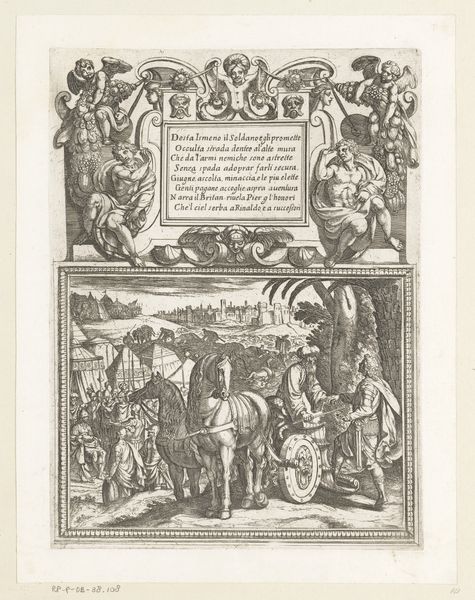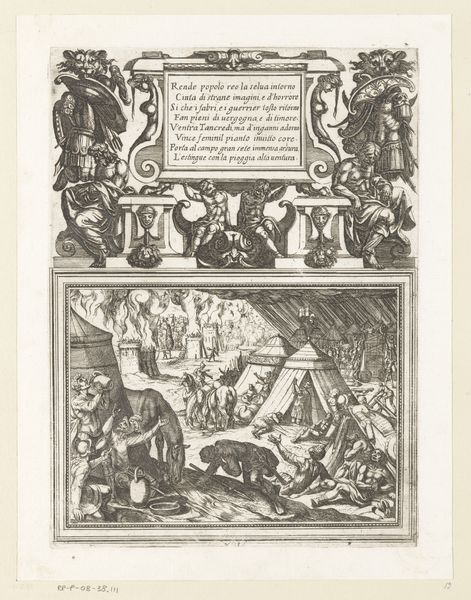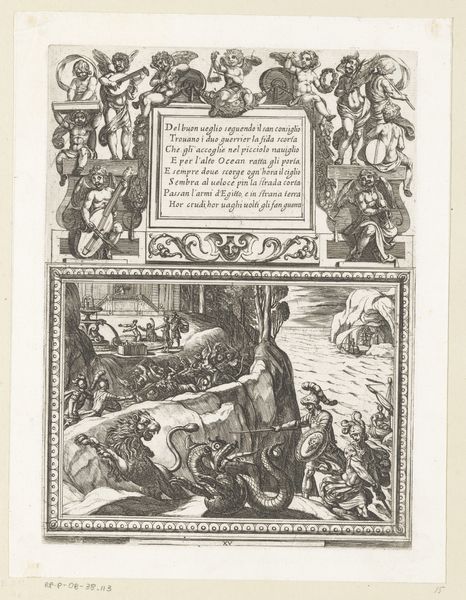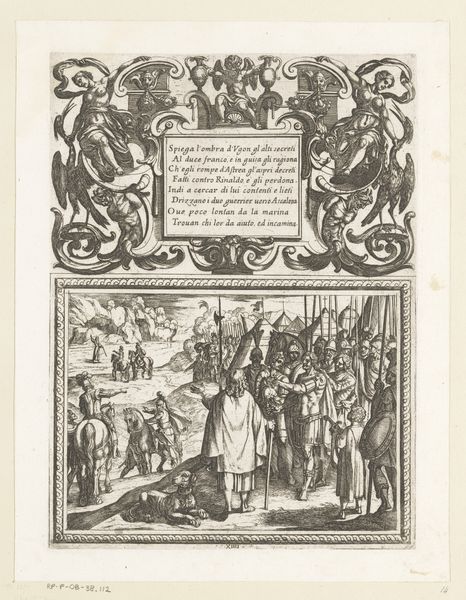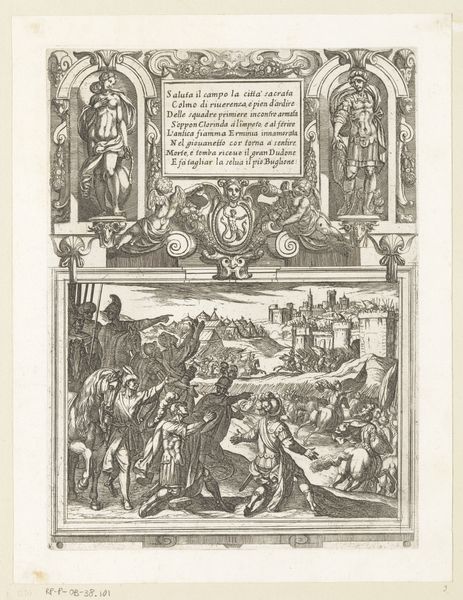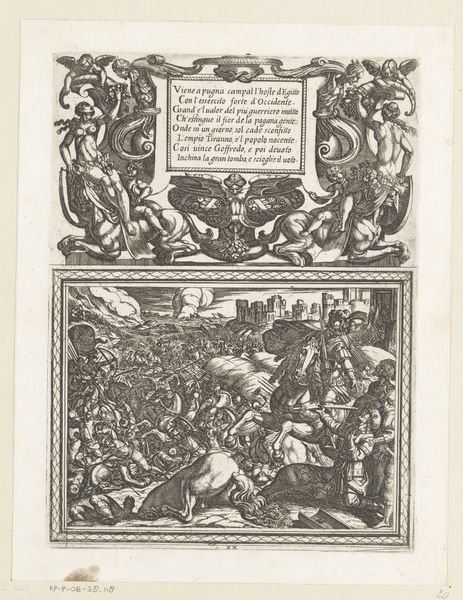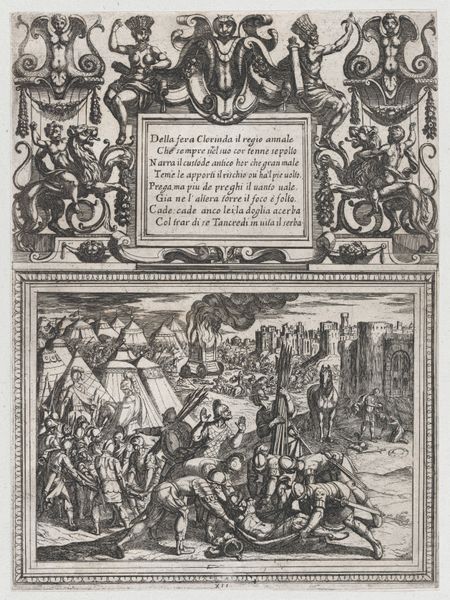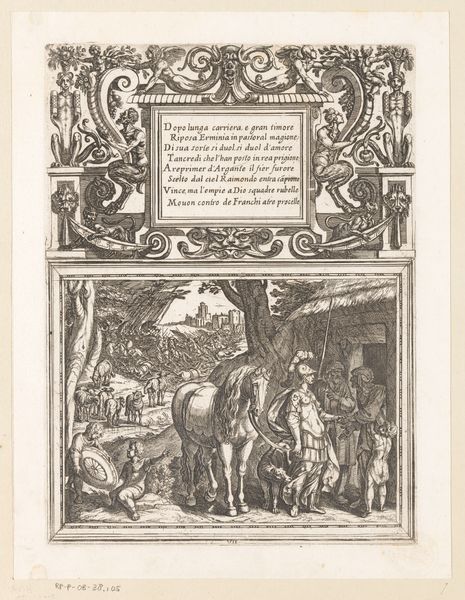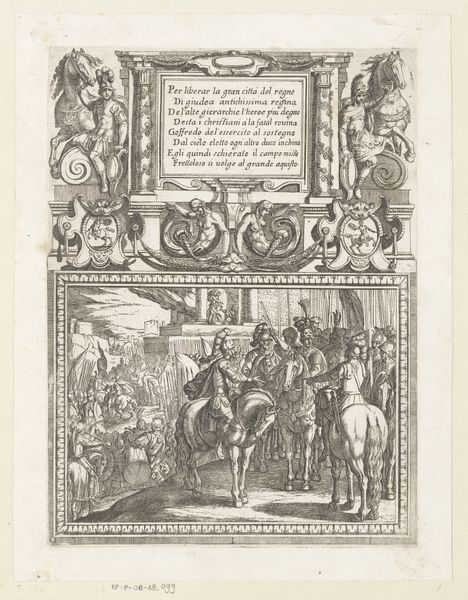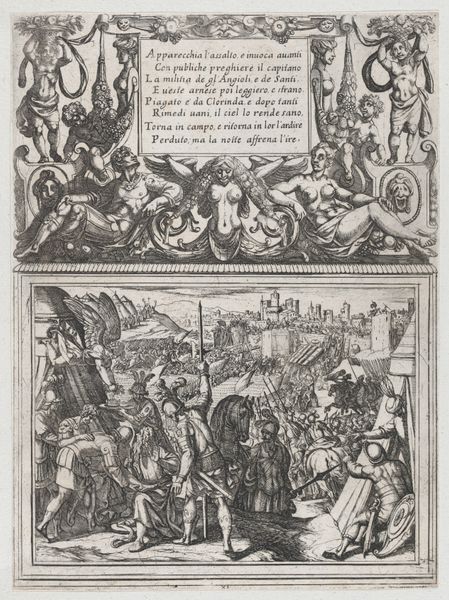
Illustratie bij Canto XIX van Tasso's 'Gerusalemme Liberata' 1565 - 1630
0:00
0:00
antoniotempesta
Rijksmuseum
#
comic strip sketch
#
aged paper
#
comic strip
#
old engraving style
#
personal sketchbook
#
sketchwork
#
old-timey
#
pen work
#
sketchbook drawing
#
storyboard and sketchbook work
Dimensions: height 275 mm, width 204 mm
Copyright: Rijks Museum: Open Domain
This is Antonio Tempesta’s, ‘Illustration for Canto XIX of Tasso's Gerusalemme Liberata'. It is a print made using engraving, a process that involves cutting lines into a metal plate, inking it, and then pressing it onto paper. Here, the material – metal and paper – plays a crucial role. The incised lines, so characteristic of engraving, give the image its sharp, detailed quality. Notice how the density and direction of these lines create shading and texture, bringing the battle scene to life with a sense of drama and chaos. Engraving was a labor-intensive process, demanding skill and precision, and was critical to the mass production of images, and dissemination of ideas in early modern Europe. Tempesta’s print reflects the growing commercialization of art, at a time when artists often worked as part of larger workshops, producing prints for a growing market. By understanding the materials and processes involved, we gain insight into the social and economic context in which this image was made, challenging the traditional divide between art and craft.
Comments
No comments
Be the first to comment and join the conversation on the ultimate creative platform.

